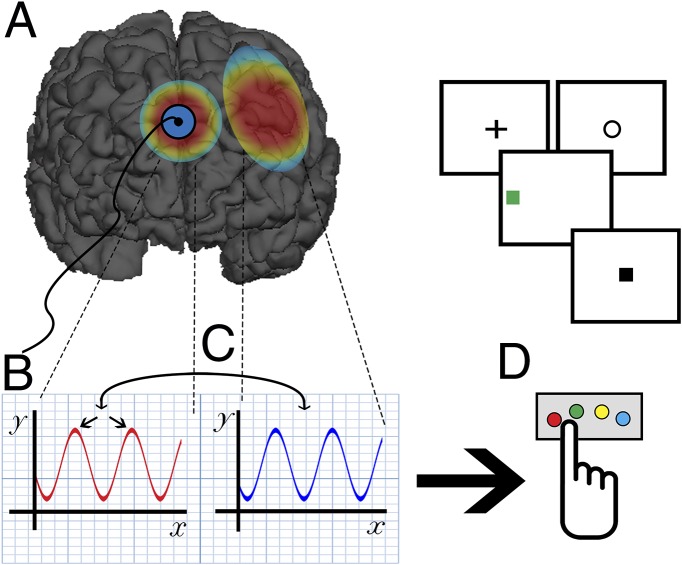Fig. 1.
Reinhart et al. (2) apply low-dose (1.5 mAmp) direct-current electrical stimulation of the medial PFC (which includes the dorsal anterior cingulate cortex and presupplementary motor area), an area of the brain that is active and generates theta (4–8 Hz) neuronal oscillatory activity under conditions in which there is a need for increased cognitive control. The stimulation (A) leads to (B) increased intertrial phase coupling in neuronal ensembles in this region during error commission, along with (C) phase coupling between the medial PFC and lateral PFC. This activity is associated with (D) enhanced performance on a cognitive control task and increased slowing of reaction times on trials that follow the error (“adaptive cognitive control”). Effects are seen in both patients with schizophrenia (who during sham stimulation show decreased medial PFC error-related theta and an absence of adaptive control) and healthy comparison subjects. This study provides novel causal data on the role of the medial PFC in mediating dynamic cognitive control, and the results are consistent with the model of adaptive control initially proposed by Botvinick et al. (7) in 2001 and further elaborated by Cavanaugh and Frank (5) in 2014. The findings also have important clinical implications, suggesting the potential use of this form of neurostimulation to remediate the disabling, treatment refractory cognitive deficits that are widely seen in individuals with schizophrenia.

